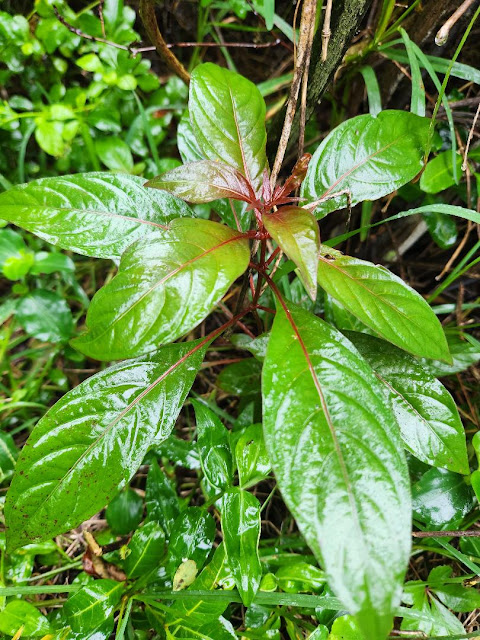Plants are Resilient
When I moved into this home five growing seasons ago, I was gifted a beautiful firebush (Hamelia patens) by a close friend. It was a very thoughtful house-warming present as I planned to add one to my new landscape regardless. A firebush is one of the best wildlife plants in my area - both for the flowers that attract a wide variety of pollinators and its fruit which often is a favorite among songbirds such as mockingbirds, cardinals and brown thrashers. For the first year, it grew well but after the first winter it started to decline and by summer it was dead. At that point, I planned to dig it out and remove it, but the dead stems were being used by several of the vines on the nearby fence and they seemed to enjoy the support this dead shrub gave them I decided to leave it alone and provide this function. In death, it was still useful to my landscape.
A few days ago, I pulled some of those excess vines away from the other plants I have added to this area and I saw this - a new 12-inch sprout on my once-"dead" shrub. It took 2 growing seasons to emerge from its root system, but it had never actually died. I've written about this early in my blog when my "dead" gum bumelia (Sideroxylon lanuginosa) came back from the roots below the ground four months after the top died, but this experience was unique to me and it shows the reliance common to plants. Plants are more resilient than animals in my experience. Though the legendary phoenix was reported to rise from the ashes, it doesn't happen in real life. Of course, truly dead plants don't do this either, its just that we don't see what's happening underground. Plants in stressful conditions normally give up their above-ground biomass, but they cling to life in what lies beneath the earth. The root system and below-ground stem do not die easily. It regroups and hopes for better times ahead. What that was for this firebush, I will never know. The important part is that this plant sensed it. My gum bumelia is now 10 feet tall and doing beautifully. I'm hoping that this firebush will do the same.
With Hurricane Ivan closing in on much of Florida, I see a great many posts from people worried about the future of their plants and wondering if they can protect them in some way. I understand those concerns, but I would add that a plant planted in the right spot should survive even if there's damage to the above-ground portion. I've learned a great many things about plants over the decades that I've been serious about them, but perhaps the most important lesson is the one this firebush reinforced. Be patient with your plants, Don't give up if something happens that looks on the surface to be a tragedy. You may be surprised how resilient and strong your plants are. Of course, you still need to be planting those species that should be adapted to your growing conditions.




Comments
Post a Comment